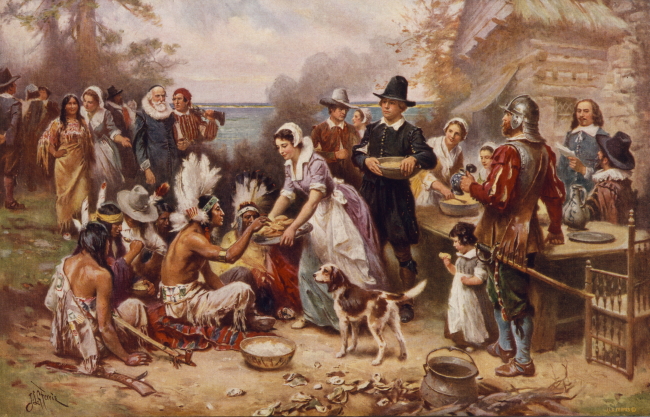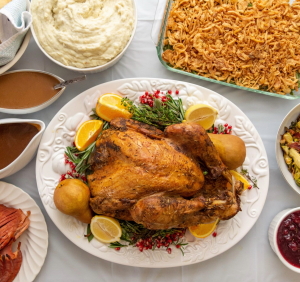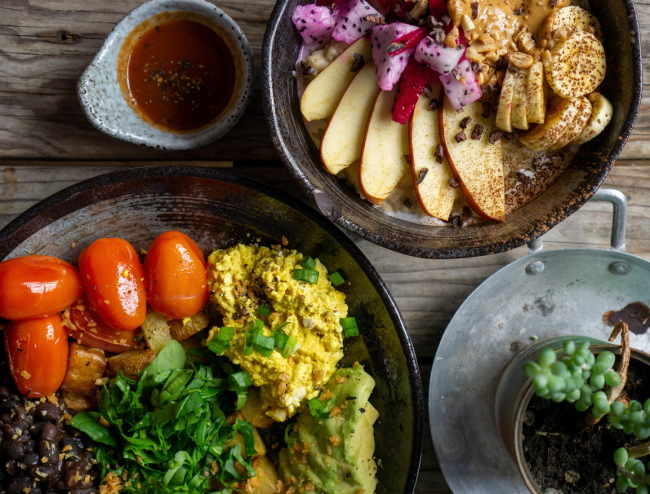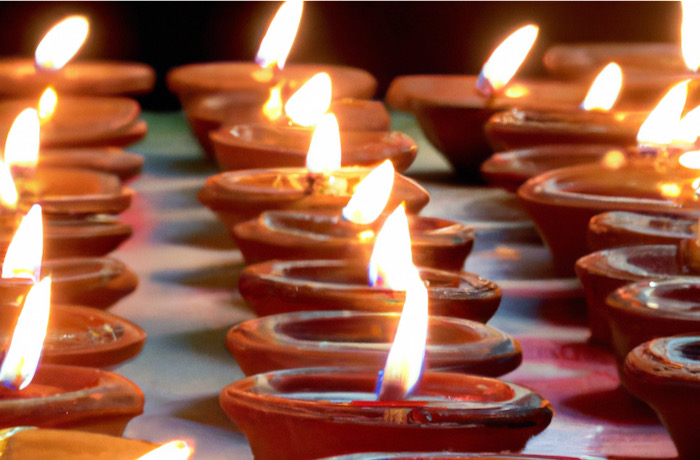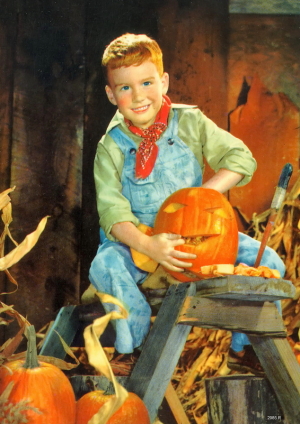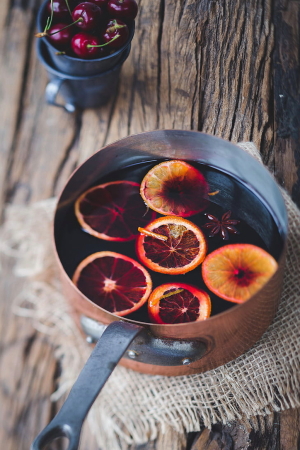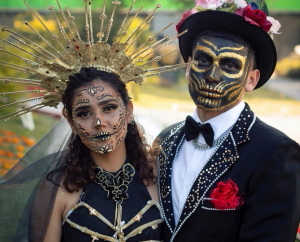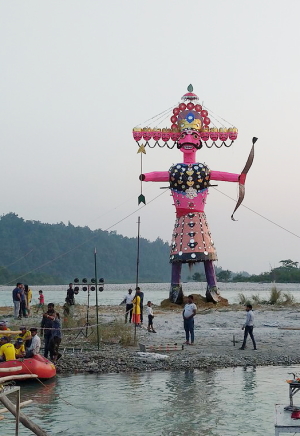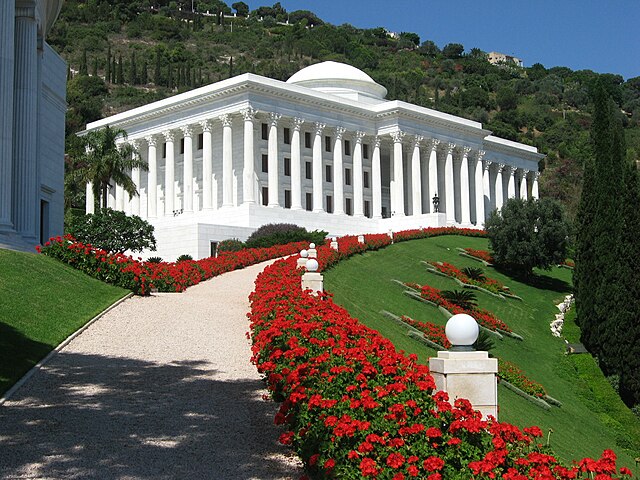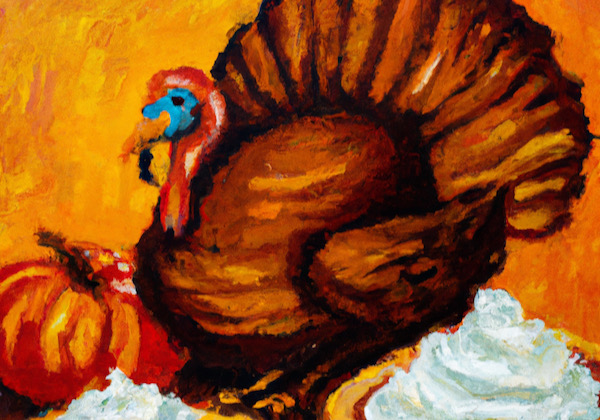THURSDAY, NOVEMBER 23: Savor the smells and tastes of the season while expressing gratitude, for the holiday of (American) Thanksgiving. Many foods common on the Thanksgiving table are native to North America and to the season, such as corn, sweet potatoes, pumpkin, squashes and cranberries.
Mealtime prayers and worship services are still common on this holiday of gratitude.
THANKSGIVING: A HISTORY
Though earlier thanks-giving events took place through the centuries, it was in 1621 that the feast shared by Pilgrims and Wampanoag Native Americans, in Plymouth, that would become today’s American Thanksgiving. Lincoln may be the founder of our annual holiday tradition, but that very early cross-cultural dinner in Plymouth still inspires millions of Americans.
That Thanksgiving celebration melded two very different cultures: the Wampanoag and the Europeans. For the Wampanoag, giving thanks for the Creator’s gifts was an established custom. A plentiful harvest was just one of several reasons for a Wampanoag ceremony of thanks. For European Pilgrims, English harvest festivals were about rejoicing, and after the bountiful harvest of 1621 and amicable relations between the Wampanoag and the Europeans, no one could deny the desire for a plentiful shared feast. The “first” Thanksgiving took place over three days, and was attended by approximately 50 Pilgrims and 90 Native Americans.
By the 1660s, an annual harvest festival was being held in New England. Church leaders proclaimed the Thanksgiving holiday and, later, public officials joined religious leaders in declaring such holidays. The Continental Congress proclaimed the first national Thanksgiving in 1777, and just over one decade later, George Washington proclaimed the first nation-wide thanksgiving celebration, as “a day of public thanksgiving and prayer.” National Thanksgiving proclamations were made by various presidents through the decades, falling in and out of favor until Sarah Hale convinced President Abraham Lincoln to proclaim Thanksgiving as a federal holiday. Still, it wasn’t until 1941 that Thanksgiving was established permanently as the fourth Thursday of November.
FOOTBALL, PARADES & TURKEY TROTS
The National Football League traditionally plays games on Thanksgiving Day, and in 1924, Americans enjoyed the inauguration of both the “Macy’s Thanksgiving Day Parade”—held annually in New York City—and “America’s Thanksgiving Day Parade”—held in Detroit. To this day, both parades (and football games) welcome tourists and locals alike and are widely televised. Several U.S. cities host a Turkey Trot on Thanksgiving morning, welcoming runners of all ages to burn off some calories in anticipation of the day’s feast.
Recipes, décor and hosting tips: Find recipes, menus and more at Food Network, AllRecipes, Food & Wine and Epicurious.
Thanksgiving crafts: Adults can create DIY décor with help from HGTV, and kids can be entertained before the big dinner with craft suggestions from Parents.
